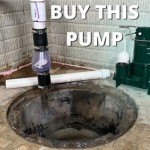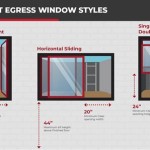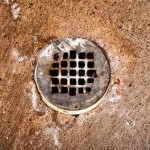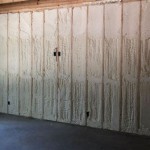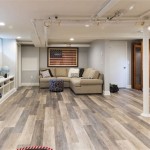Top Rated Dehumidifiers for Basements With Pumps
Basements, often located underground, are inherently prone to moisture accumulation. The cool temperatures and limited ventilation create ideal conditions for condensation, leading to a host of problems including mold growth, musty odors, structural damage, and discomfort. Combatting this moisture requires a robust dehumidification system. Dehumidifiers with pumps offer a particularly effective solution for basements, allowing for continuous and automated drainage of collected water. This article will explore top-rated dehumidifiers designed specifically for basement applications, with a focus on models equipped with integrated pumps.
The selection of a dehumidifier for a basement necessitates careful consideration of several factors. These include the square footage of the basement, the severity of the moisture problem, the desired features, and budget constraints. While portable dehumidifiers are generally adequate for smaller basements with mild moisture issues, larger or more problematic basements often benefit from the enhanced capacity and drainage capabilities of dehumidifiers with pumps. The integrated pump eliminates the need for manual emptying of the water collection tank, a significant convenience, especially in basements where gravity drainage options may be limited or unavailable.
Understanding the Need for a Dehumidifier in Basements
The prevalence of moisture in basements stems from a combination of geological and environmental factors. Ground water seepage through porous concrete walls, condensation caused by temperature differences between the basement and the outside air, and inadequate drainage around the foundation all contribute to elevated humidity levels. This excess moisture creates a breeding ground for mold and mildew, which can pose serious health risks, particularly for individuals with allergies or respiratory sensitivities. Mold spores can trigger allergic reactions, asthma attacks, and other respiratory problems.
Furthermore, high humidity accelerates the deterioration of building materials. Wood framing can rot, drywall can crumble, and metal components can rust. These structural issues can compromise the integrity of the building and lead to costly repairs. Moreover, damp basements provide an inviting environment for pests such as insects and rodents, which thrive in moist conditions. The musty odors associated with damp basements can permeate the entire house, creating an unpleasant living environment and potentially reducing property value.
Therefore, investing in a high-quality dehumidifier is a proactive measure to protect the health of occupants, preserve the structural integrity of the building, and maintain a comfortable living environment. Dehumidifiers work by drawing in moist air, cooling it to condense the moisture, and then reheating the air before releasing it back into the room. The condensed water is collected in a tank, or, in the case of models with pumps, automatically discharged through a drainage hose.
Key Features to Consider in a Basement Dehumidifier with Pump
When selecting a dehumidifier for a basement, several key features should be taken into account to ensure optimal performance and suitability for the specific environment:
- Capacity: Dehumidifier capacity, measured in pints per day (PPD), indicates the amount of moisture the unit can remove from the air in a 24-hour period. For basements with mild moisture issues, a 30-pint dehumidifier may suffice. However, for basements with moderate to severe moisture problems, a 50-pint or even a 70-pint dehumidifier is recommended. The selection of capacity should be based on the square footage of the basement and the severity of the moisture problem.
- Pump: The integrated pump is a crucial feature for basements where gravity drainage is not feasible. The pump allows the dehumidifier to automatically discharge the collected water upwards or horizontally to a sink, drain, or even an outdoor location. The pumping height and distance should be adequate for the specific drainage setup.
- Energy Efficiency: Dehumidifiers consume electricity, so energy efficiency is an important consideration. Look for models that are Energy Star certified, as these units meet strict energy efficiency standards. Energy Star certified dehumidifiers can save energy and reduce utility bills over the long term.
- Operating Temperature Range: Basements tend to be cooler than other areas of the home. Therefore, it is important to select a dehumidifier that is designed to operate effectively in lower temperatures. Some dehumidifiers are equipped with features such as auto defrost to prevent ice buildup on the coils in cold environments.
- Digital Controls and Display: Digital controls and a clear display make it easy to set the desired humidity level and monitor the unit's performance. Features such as a timer, auto restart, and filter cleaning indicator enhance convenience and ease of use.
- Noise Level: Dehumidifiers can generate noise during operation. Consider the noise level of the unit, especially if the basement is used as a living space. Look for models that are designed for quiet operation.
- Portability: While dehumidifiers with pumps are typically designed for more permanent installations, portability can still be beneficial for moving the unit around the basement or for temporary use in other areas of the home. Features such as casters and handles enhance portability.
- Durability and Warranty: Basements can be harsh environments, so it is important to select a dehumidifier that is built to last. Look for models with durable construction and a comprehensive warranty to protect against defects.
Top Rated Models and Their Features
Several brands offer top-rated dehumidifiers with pumps specifically designed for basement applications. Here's a look at some notable models and their features:
- hOmeLabs 4,500 Sq. Ft Energy Star Dehumidifier with Built-in Pump: This dehumidifier is designed for large basements and can remove up to 50 pints of moisture per day. It features a built-in pump with a 16-foot hose, allowing for continuous drainage. It also offers digital controls, an auto-restart function, and a filter cleaning indicator.
- Ivation 70 Pint Energy Star Dehumidifier with Pump: This unit boasts a large capacity, removing up to 70 pints of moisture daily, suitable for very damp basements. It features a powerful internal pump that can discharge water up to 16 feet vertically. Digital controls enable precise humidity settings, and an automatic defrost function ensures efficient operation in cooler basement temperatures.
- Whynter Energy Star 70 Pint Portable Dehumidifier with Pump: Ideal for medium to large basements, this model offers a 70-pint capacity and an integrated pump for continuous drainage. It includes features like auto-restart, auto-defrost, and a washable pre-filter. The digital display shows both room humidity and set humidity levels.
- Vremi 70 Pint Dehumidifier with Pump: Another strong contender in the 70-pint category, the Vremi model offers a built-in pump for hassle-free drainage. It has adjustable humidity settings, a convenient timer, and an automatic shut-off feature when the water tank is full (for those who prefer using the tank option). It also boasts a sleek design and quiet operation.
- Frigidaire FFAP5033W1 50-Pint Dehumidifier with Built-in Pump: This dehumidifier offers a solid combination of affordability and performance. With a 50-pint capacity and a built-in pump, it's well-suited for medium-sized basements. It features a continuous drain option, electronic controls, and a washable filter.
Before making a final decision, it is recommended to read reviews from other users, compare prices, and carefully consider the specific needs of the basement. Factors such as the size of the basement, the severity of the moisture problem, and the desired features should all be taken into account.
Proper installation and maintenance are crucial for ensuring the longevity and effectiveness of the dehumidifier. The unit should be placed in a central location in the basement, away from obstructions that could impede airflow. The filter should be cleaned regularly to maintain optimal performance. The drainage hose should be securely connected and properly routed to prevent leaks. Finally, the dehumidifier should be inspected periodically for any signs of damage or malfunction.
By selecting a top-rated dehumidifier with a pump and following proper installation and maintenance procedures, homeowners can effectively combat moisture problems in their basements, protecting their health, preserving their property, and creating a more comfortable living environment. Investing in a quality dehumidifier is a worthwhile investment that can pay dividends in the long run.

The Best 7 Dehumidifiers For Basement Rooms

What Is The Best Basement Dehumidifier Reviews

Best Dehumidifiers For Basements 2024 Forbes Vetted

The 5 Best Dehumidifiers Of 2024 Reviewed Hgtv

The Best Dehumidifiers For Basements In 2024 Popular Science

The Best Dehumidifiers For Basements In 2024 Popular Science

5 Best Dehumidifiers Of 2024 Tested By Experts

10 Best Selling Basement Dehumidifiers For 2024 The Jerusalem Post

The 5 Best Dehumidifiers Of 2024 Reviewed Hgtv

The Best 7 Dehumidifiers For Basement Rooms
